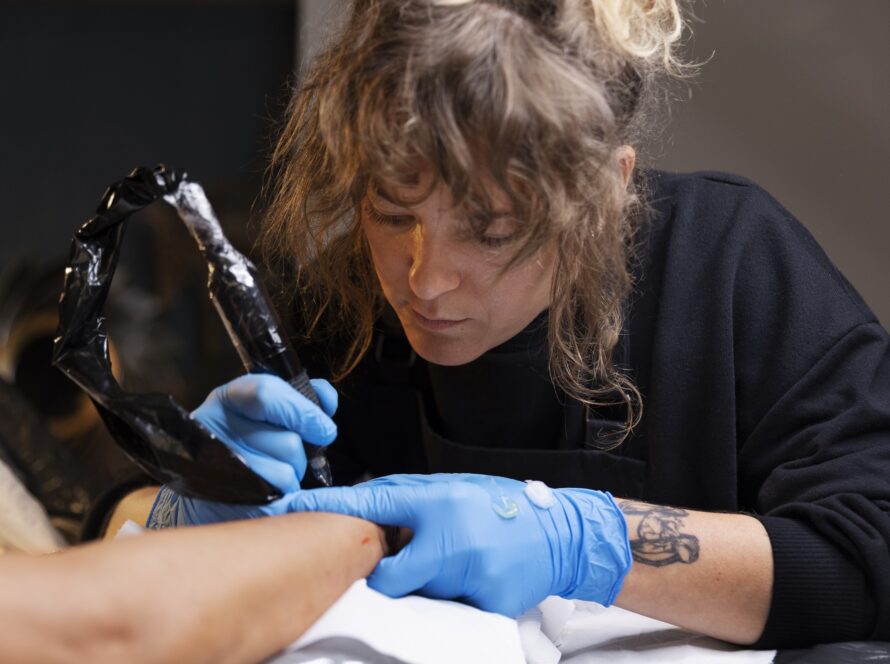“Take good care of your skin and hydrate. If you have good skin, everything else will fall into place.” — Liya Kebede.
There is no one-size-fits-all approach to having beautifully radiant skin. Everybody has a different type of skin, with different needs, traits, and worries. The first step to getting the best outcomes from aesthetic procedures is to understand your skin type. Regardless of your skin type—oily, dry, mixed, sensitive, or aging—there are customized treatments designed to meet your specific needs and bring out the best in you. We’ll examine the top aesthetic procedures for various skin types in this extensive guide, including advice on how to properly take care of and revitalize your skin.
Different Skin Types.
Let’s examine the five main skin types and their traits in more detail before getting into particular treatments:
1. Oily Skin.
Excessive production of sebum, which gives the skin a shiny, greasy appearance, enlarged pores, and a tendency toward acne and breakouts are the characteristics of oily skin.
Chemical Peels: Peels with salicylic acid help clear pores, lessen oiliness, and improve skin that is prone to acne.
Microdermabrasion: Dead skin cells and extra oil are removed from the skin during this exfoliation procedure, leaving the skin smoother and more refined.
Laser Therapy: IPL (Intense Pulsed Light) and laser resurfacing are examples of laser treatments that target oil glands and decrease sebum production, improving the texture and clarity of the skin.
2. Dry Skin.
Dry skin feels tight, scratchy, and flaky because it is devoid of moisture. It could seem lifeless and have noticeable creases and fine lines.
Hydrating Facials: Hydrating facials that include ceramides, vitamin E, and hyaluronic acid help to rebuild the skin’s barrier function and replace moisture.
HydraFacial: This multi-step treatment leaves the skin feeling moisturized, plump, and luminous after cleansing, exfoliating, and extracting pollutants.
Laser Genesis: This non-ablative laser treatment lessens dryness-related redness and fine wrinkles, enhances skin texture, and increases the generation of collagen
3. Combined Skin.
Combination skin has both dry and oily patches; it usually has dry cheeks and an oily T-zone (forehead, nose, and chin).
Customized Facials: A customized facial uses a blend of products and techniques to target specific issues in various face areas, such as dry cheeks and an oily T-zone.
Microneedling: To treat both oily and dry areas of the skin and to promote general skin rejuvenation, microneedling increases the generation of collagen and improves skin texture.
LED Light Therapy: In oily areas, LED light treatment targets bacteria that cause acne; in dry areas, it reduces inflammation and encourages the formation of collagen.
4. Sensitive Skin.
Sensitive Skin is more likely to respond badly to harsh chemicals or environmental triggers, leading to irritation, redness, and inflammation.
Gentle Chemical Peels: Fruit enzyme or lactic acid peels gently exfoliate the skin without irritating it, enhancing its tone and texture.
Calming Facials: Aloe vera, chamomile, and oat extract are examples of substances that soothe the skin and reduce redness and inflammation, resulting in the restoration of balance and comfort.
Low-Level Laser Therapy (LLLT): Suitable for delicate skin types prone to irritation, LLLT stimulates cellular repair and minimizes inflammation.
5. Aging Skin.
Wrinkles, fine lines, age spots, and a loss of firmness are caused by a decrease in collagen and elastin production in aging skin.
Anti-Aging Facials: Anti-aging facials that include growth factors, antioxidants, and peptides address a variety of aging indications, such as wrinkles, sagging skin, and uneven skin tone. synthesis, and enhances overall firmness and texture by combining microneedling with radiofrequency energy.
Fractional Laser Resurfacing: This procedure encourages collagen remodeling and skin renewal by focusing on deep wrinkles, age spots, and uneven pigmentation.
Additional Tips For Skin Type Tailoring Treatments.
Skincare Expert: Make an appointment for a consultation with a dermatologist or skincare specialist to discuss your goals, problems, and skin type as well as to create a customized treatment plan.
Patch Test New Products: To prevent unfavorable reactions, patch test new skincare products and treatments on a tiny portion of your face if you have sensitive skin.
Observe How Your Skin Reacts: Observe how your skin reacts to various treatments and modify your skincare regimen as necessary. Stop using a product or treatment and speak with a skincare expert if it irritates or discomforts you.
Stay Consistency: When it comes to aesthetic treatments, consistency is essential to getting the best results. Make sure you adhere to your skincare regimen and schedule periodic maintenance treatments and follow-up evaluations at regular intervals.
Whatever your skin type, the ultimate purpose of cosmetic treatments is to bring out the best in you and increase your self-assurance.
Understanding the distinctive qualities of your skin and selecting treatments that target your particular issues will help you achieve beautiful, healthy-looking skin and gracefully and confidently embrace your originality.
Always remember to put self-care first, take care of your skin from the inside out, and appreciate the beauty of diversity in all its forms. Treat your skin with love, care, and respect, and watch it grow bright and full of life for years to come. Your skin is a reflection of your inner energy and well-being.



